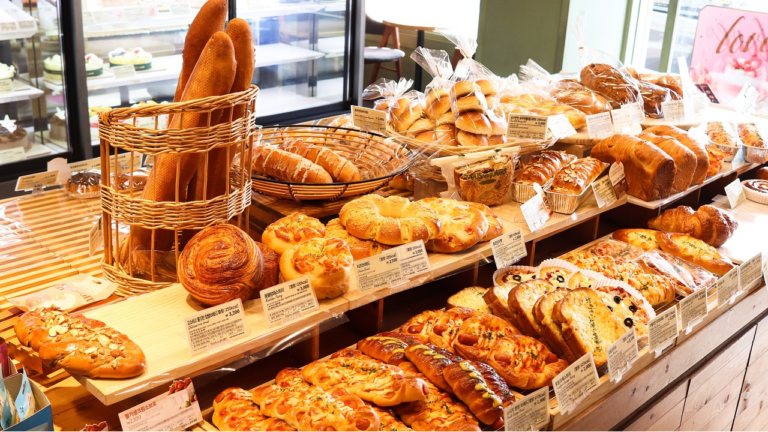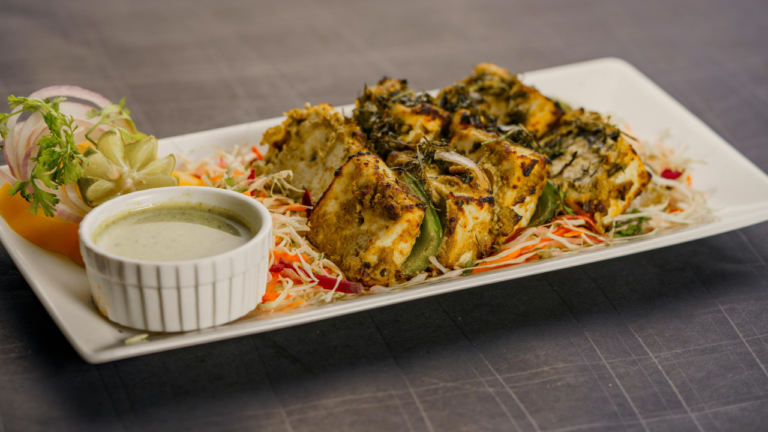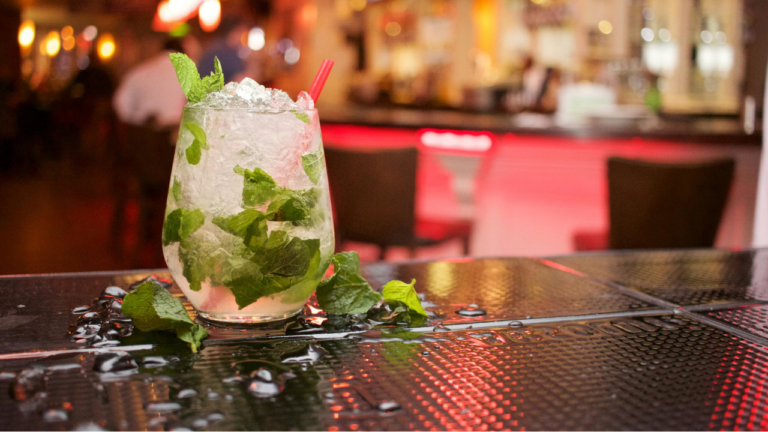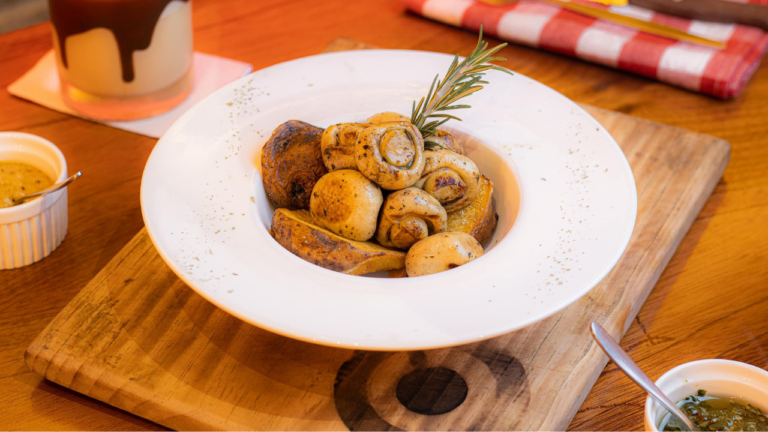Hunting For Heavenly Fusion? Don’t Miss European Fusion Cuisine
What Is European Fusion?
European Fusion Cuisine, a Fusion of Flavors and Culinary Traditions. Fusion cuisines frequently evolve when migrant communities interact with native food traditions, resulting in distinct culinary combinations.
However, due to restricted migration within European countries in recent decades, fusion cuisines have been sparse, with Turkey standing out. South Asian fusions, such as haggis pakora, have grown in favor of the United Kingdom, whereas France’s fusion cuisine has been influenced by the Maghreb.
Pizza’s adaptability to a broad variety of toppings is a fun feature of fusion cuisine. Pizza has grown to include unusual ingredients like BBQ sauce or other toppings that aren’t made with tomatoes while being historically linked with tomatoes. On the other hand, some people may find it strange or even strange when carb-heavy components like spaghetti or fries are added to a pizza.

Chicken tikka masala originated in the United Kingdom and is now regarded as the classic British national dish. It was developed after someone asked for a sauce to complement their chicken tikka, which resulted in the inclusion of the savory masala sauce. This meal is not only extremely popular in Britain, but it also shows the country’s embracing and adaptation of exterior culinary influences. Chicken tikka is an Indian dish, and the addition of a gravy-like sauce in response to British preferences highlights the adaptability of British cuisine.
Asian European Fusion Food
A unique blend of European and Asian culinary traditions, Euro-Asian cuisine incorporates a variety of ingredients from both continents. This unusual pairing highlights the blending of tastes and ingredients that create an incredibly amazing eating experience. California is one prominent state where Euro-Asian food is popular, combining American, Chinese, Japanese, and European elements to produce an awesome culinary style.
Euro-Asian cuisines provide an enticing selection of foods, from luscious shrimp and tofu to delicious sushi, unique cocktails, and a bunch of salads. The true essence of Euro-Asian cuisine is defined by the fusion of tender textures, juicy roasted meats, salads, and pastries with the lively heat of spicy spices, chopped meats, seafood, mashed vegetables, and unusual ingredients.

Euro-Asian cuisine is distinguished by its wide variety of fusion dishes which show respect to both cultures. When these meals are blended with exotic Asian spices or aromatic European herbs, they take on an even more traditional character. Vegetable soups with turnips, carrots, cabbage, Chinese pickles (cha tsai), pea sprouts, and tomatoes are prime examples of a harmonic flavor combination. The delicious blend of crisp nori, miso-cilantro vinaigrette dressing, and European influences makes Euro-Asian salads stand out.
The spring roulade is a well-known Euro-Asian dish made of noodles, green onions, red peppers, cubed chicken breast, soy sauce, a five-spice blend, cayenne pepper, bamboo buds, cabbage, and peanut oil. Because of its rich nutrients and versatility, tofu, also known as doufu in Chinese cuisine, takes center stage as a popular vegetarian meal.

Time and precision are essential while preparing these blend dinners, main courses, and spice blends. Cooking methods vary and include fresh or uncooked fruits, boiled vegetables, mashed ingredients, oil-fried meats and plants, chopped greens, and minced meats. Each element is prepared independently, as a single meal frequently employs three or more cooking processes to accommodate the complex combinations of portions.
Boiling is a common cooking method for rice and vegetables, which serve as the foundation for many main meals and are accompanied by a variety of dressings that reflect the various flavors of both European and Asian cultures.
Indo-European Fusion Food
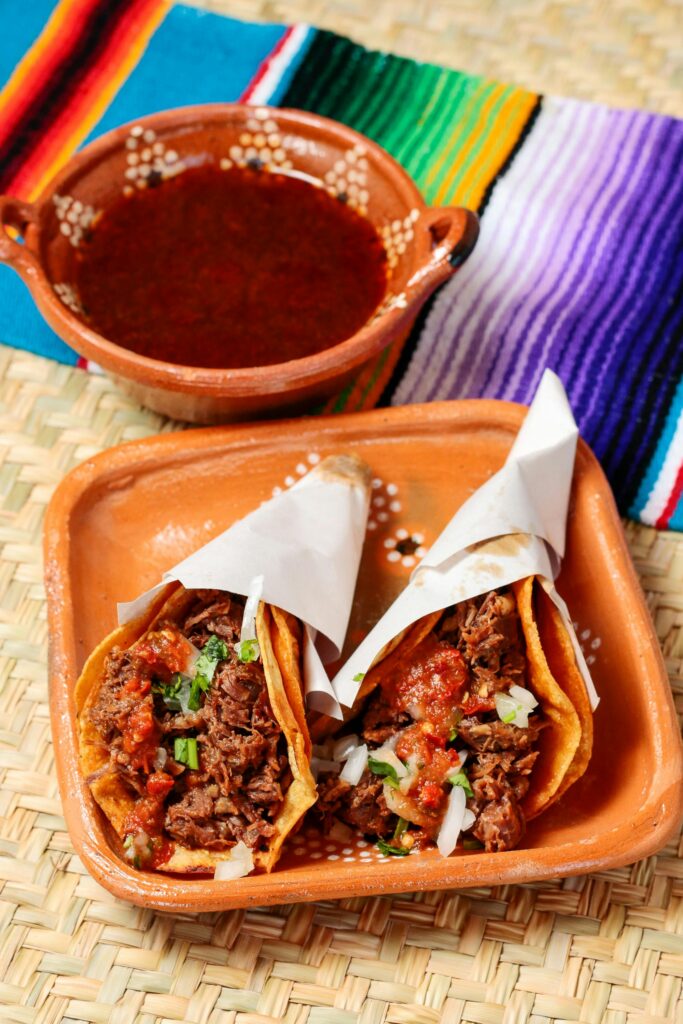
Fusion cuisine that combines Dutch and Indonesian flavors is becoming more and more popular among Indo-Dutch people. This distinctive culinary style blends Eurasian influences, especially those from Dutch, Portuguese, Spanish, French, and British cuisines, with the tastes and preparation methods of authentic Indonesian cuisine.
Fusion cuisine is a long-standing trend in the restaurant business, where chefs use flavors and ingredients from many cultures to produce inventive and delicious foods. For instance, the popular restaurant Nobu provides Wagyu Tacos and Seabass Jalapeno Miso, which offer a unique take on Japanese cuisine.
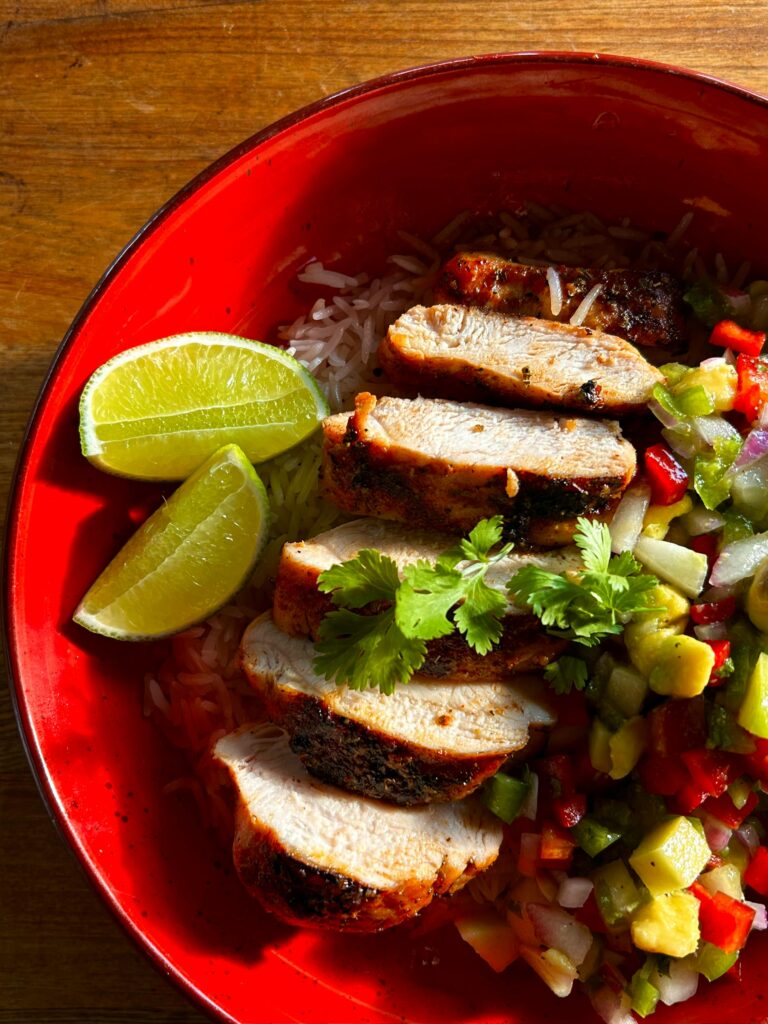
Similarly, the Oregon-based restaurant company Koi Fusion combines Korean cuisine with traditional sandwich staples such as the Reuben, cheesesteak, and slider. Fusion cuisine is not a new concept, but rather a reflection of the long-standing practice of combining culinary traditions as a result of cultural interchange and trade. The Banh Mi sandwich, a Vietnamese staple served on a French-style baguette, dates back to the French colonial period and combines Southeast Asian ingredients such as cilantro, cucumber, and daikon with European ones such as pate and cheese.
Food fusion is the result of immigration and globalization, demonstrating how different cultures have intertwined and influenced one another’s culinary traditions throughout history.
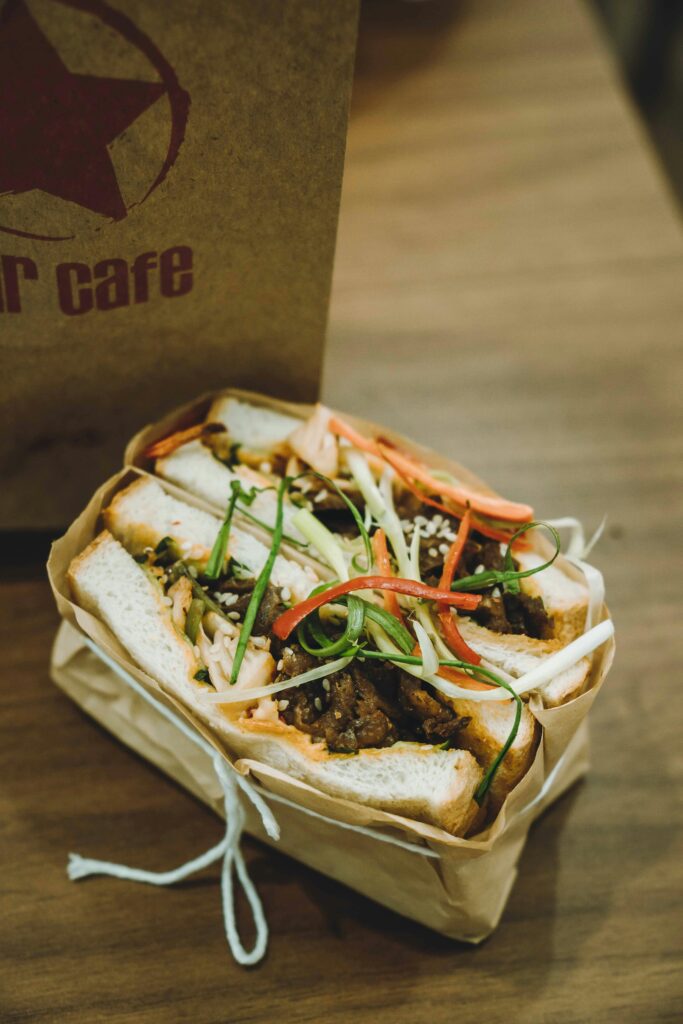
Popular European Fusion Dishes You Shouldn’t Miss:
We’ve compiled a list of amazing European fusion foods that you must try. The nice part is that you don’t have to go to a fusion restaurant to eat these dishes. We’ve already shared the simplest recipes for all of these delicious dishes in our recipes section. Simply click on the name of the meal from the list to view the entire recipe. Happy cooking!
- Matzo-rella Sticks
- Cevapi
- Kriibsen
- Gollai Appan
- European style Htamane
- European Potato Pancakes
- Creamy Rabbit Stew
- Grilled Pork Ribs with Smoky Paprica Glaze
- Scali Bread with a European Twist
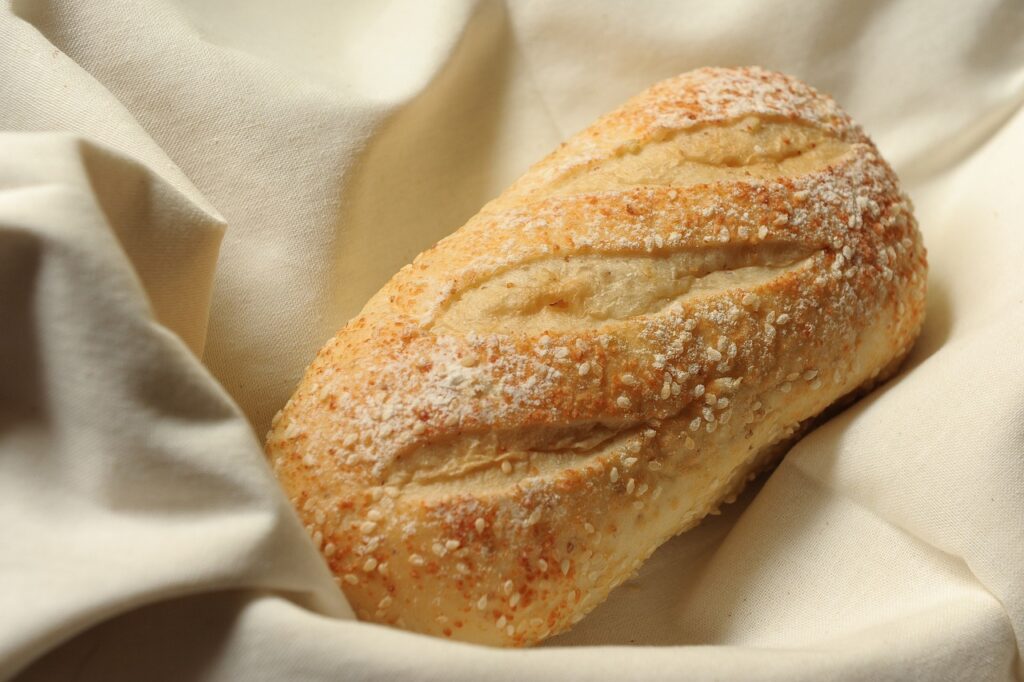
- Crispy chicken with Sweet & Sour Sauce
- Krii Bsen with Herb Butter Sauce
- Svilpikai
- Ful Medames
- Savory Rice with Cream
- Crispy Tofu Musubi
- Tempura
- The Blue Breeze Inn
- Baton Sale
- Kibbeh
- Cheese Fatayer
- Eurasian Beef Smore
- Syn Free Fajita Chicken Pasta
- Pizza Balls

- Lemongrass Tofu
- Musakhan
- Farikal
- Hungaria Goulash
- Nokedli
- Zereshk Polo
- Pies of Albania
- Uzbek Manti
- Rode Curry Beef Wellington
- Bortsch
- Combodian Chicken Curry
- Chicken Kiev
- Beef Stifado
- German Spaghetti
- Persian Roasted Chicken with Dried Cherry-Saffron Rice
- Oven Baked Creamy Samosa

Dessert
- Cannoli Crepes
- Baklava Cheesecake
- Kahk with Pistachios
- Melktart (Custard Pie)
- Brazo De Reina
- Shaabiyat
- Greek Skilled Orange Fillo Cake
- Classic Tiramisu
- Ara’eesh Agwa
- Toasted Milk Marble
- Sweet Couscous
- Italian Ricotta Cheesecake

- Tunisian Debla
- Raspberry Thumbprint Cookies
- Tort Stracciatella Z Truskawkami
- Decadent Bee Sting Cake
- Sakura Cookies for Hanami
- Egyptian Butter Cookies
- Dry Apricot Pudding
- Turkish Halwa
- Ube Crinkle Cookies
- Kluski Na Parze
- Turkish Tulumba
- Rarazek Cookies
- Pistachio Pudding
- Petit Fours with Ghee
- Maamoul Mad Pistachio with Ashta
- Semolina Cake with Cream
- Booza/Buzza
- Pistachio Semolina Cake
- Flatbread Crackers
- Chocolate Pumpkin Cake
- Thandai Cookies
- Zalabia

- Bird’s Nest Kunafa
- Chocolate Babka
- German Hazelnut Torte
- Greek Ekmek Kataifi
- Palestinian Mekarkama
- Chocolate Covered Dates
- Ghraybeh
- Cardamom Jam Thumbprint Cookies
- Sussex Pond Pudding
- Faworki
- Coconut Baklava

Please click on the item’s dish title to view the recipes, or go to our recipes area. Cheers to Fusion Cooking!
Some Frequently Asked Questions About Fusion Cuisine,
What does fusion cooking aim to achieve?
Fusion cooking is fundamentally about ingenuity and inventiveness. It’s the deliberate blending of ingredients, methods, and flavors from two or more culinary traditions to create dishes that are both well-known and unusual.
What is the fundamental concept of fusion food?
Fusion cuisine combines various flavors, ingredients, and cooking methods in an inventive and experimental way. Chefs blend classic components with creative innovations, capitalizing on the diversity of world cuisines. Fusion cuisines typically arise from the blending of local culinary traditions with immigrant groups. There aren’t many fusion cuisines because migration across European nations hasn’t been particularly high for the majority of the past several decades. Except for Turkey, the majority of fusion cuisines consist of South Asian fusions seen in the UK (such as haggis pakora) and Maghrebi influences found in France, among other things.
Who introduced fusion cuisine?
Italian spaghetti is an outstanding instance of early fusion, as it would not have existed if Italy had not been exposed to Chinese noodles. Most people believe that the origins of modern fusion cuisine may be found in the 1980s when chefs like Wolfgang Puck and Roy Yamaguchi started purposefully blending flavors from many cultures.
What is the most ancient fusion dish?
This explains why Macanese food is more than just a fusion of Cantonese and Portuguese flavors. Though UNESCO has recognized Macanese cuisine as the world’s first “fusion” cuisine, many people are still unfamiliar with it and mistakenly believe it to be a Cantonese cooking style.
Which chef made fusion food popular?
Many people attribute this stylish movement to Wolfgang Puck and his delicious, classic dishes like BBQ nachos and buffalo chicken spring rolls, however, it would be inaccurate to label the fusion food movement as something new.
What exactly is the theory behind food fusion?
“Food fusion” refers to the process of combining various culinary traditions or practices into a single meal. Fusion cuisine takes several forms, including regional fusion, which combines cuisines from multiple regions or sub-regions.
What makes fusion food so significant?
For those who are in search of novel culinary experiences, fusion cuisine is ideal. They adore the novel flavors that burst in their tongues along with the dish’s comforting structure. The way the various herbs and spices blend together is distinctive, but it’s also special since the addition of the new components makes for a fresh experience.



